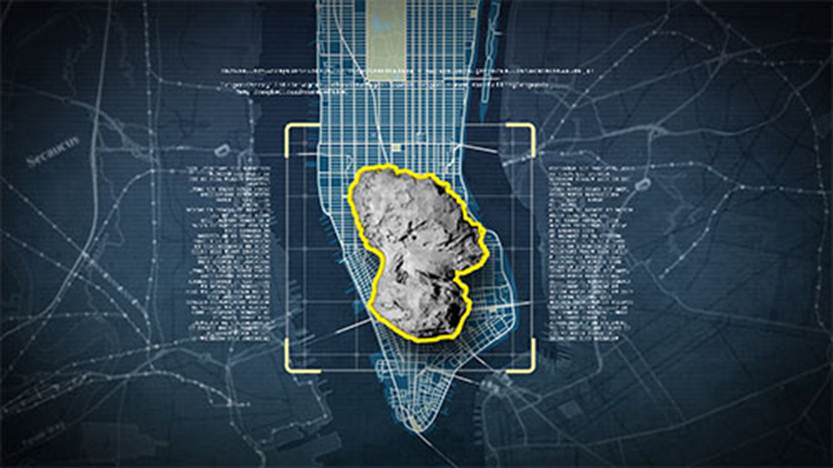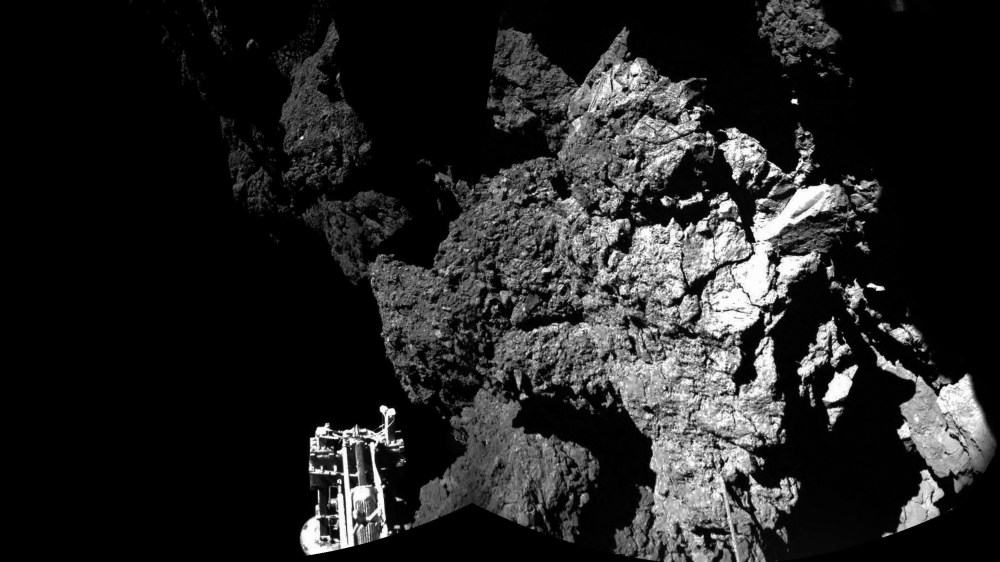The European Space Agency wowed the world on Wednesday, landing a probe on a moving comet after orbiting around it. The probe, Philae, and its mother-ship, Rosetta, will hopefully retrieve samples that could help scientists understand more about the formation of the earth and solar system.
Let’s talk about that 4.6 billion-year-old comet.
On Thursday, according to the ESA, the comet — named Churyumov–Gerasimenko, or more simply 67P — is traveling at 11.4 miles per second. Every 6.45 years, it completes its orbit around the sun. Right now, it’s roughly 310 miles away from Earth (if you’re thinking about your childhood solar system diorama, place it between Mars and Jupiter). Comets are constantly spinning (this one completely rotates every 12.4 hours, just over half the time earth’s rotation takes), are covered in ice and rock, and have an extremely uneven surface, one of the many things that made this mission particularly difficult.

Comets date back to the formation of the solar system and scientists believe they may be able to tell us how our universe was created. To reach the comet, it took Rosetta ten years, $1.8 billion dollars, and 4 billion miles of traveled space (thanks to the loop-the-loop path you can see on this ESA website by selecting “show full path”). The comet is so far away that it takes 28 minutes for data to be transmitted between mission control and Rosetta. In Earth terms, this comet is pretty big – the size of lower Manhattan—but in the scheme of the universe? Well, it’s a needle in a very, very big haystack.












